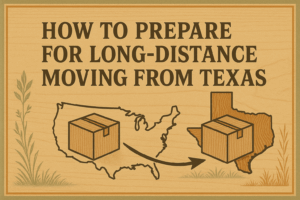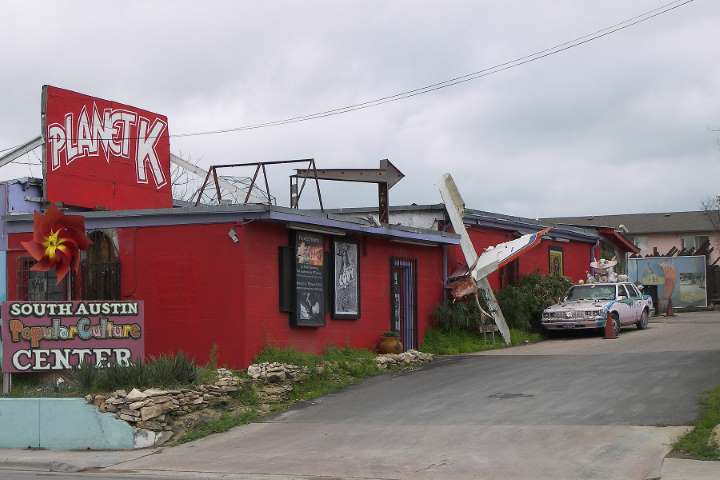
Just because the holiday season is over doesn’t mean winter is. There are still a few months of cold weather left. And if you’re planning a residential move at that time, you will run into a bit more trouble than usual. Not A Hobby Moving – Austin Movers put together this list of three challenges of moving during winter and how to overcome them.
The Challenges
Regardless of what you’re doing, the cold and snow bring on many challenges. Here are some of the biggest ones to be aware of as you prepare to move.
Moving Wooden Furniture
Even if you protect your wooden furniture well, the wood could get warped or broken during the move if it gets wet. This is mainly a problem in low humidity environments because they will create air pockets for the water to seep into, making the damage even more severe.
Securing Fragile Items
Fragile items always have the chance to break during a move, but the likelihood of that happening increases significantly during the winter. Freezing temperatures make things like glass and electrical components more brittle, which can lead them to shatter or snap under pressure more easily.
Driving on Dangerous Roads
The most important challenge to remember is driving on the roads. Even if it’s not snowing that day, the ground can still be slippery, especially if it’s below freezing out. Not only is this a problem for driving, but it can be an issue when walking boxes out to the truck.
— Not A Hobby Moving (@NotAHobbyMoving) October 19, 2022
The Fixes
Of course, this list covering the challenges of moving during winter and how to overcome them would be no good if we didn’t tell you how to fix these issues, so here are some tips.
Keep Up With Weather Announcements
The number one way to avoid these potential problems is to avidly watch the weather. If there’s a blizzard on its way or a large cold front about to pass through, you’ll want to push back your moving date. If that’s not a possibility for whatever reason, you should find the calmest part of the day. Once you actually start moving boxes, the work shouldn’t take more than a few hours. So you can still possibly escape the worst of the weather.
Use Weatherproof Packaging
When protecting your breakable items and wooden furniture, you have some options for weatherproofing them. Using plastic crates instead of cardboard boxes will keep much of the water and cold away from your items. You can also take advantage of our packing and unpacking services to ensure your belongings are well-protected throughout the process.
You can also cover fragile items in bubble wrap or put them in boxes with packing peanuts. This will keep them a bit warmer while protecting them from damage. For large wooden pieces of furniture, you can use cling wrap to cover the exposed wood. This will block out any wetness that might come their way.
Hire a Moving Company
Our last bit of advice is to hire a moving company. This is particularly important if you live in an apartment with outdoor stairwells. If those get icy, they will be quite dangerous to use. Fortunately, our team of movers in Austin has the gear and experience to deal with such an issue.
Why is it harder to move in the winter?
Risk of inclement weather
Moving in the winter presents challenges due to the increased risk of inclement weather. Heavy rain, snow, and strong winds can create hazardous conditions for both you and the movers. These weather conditions can lead to potential delays, disrupt the moving schedule, and increase stress and inconvenience. Inadequate protection against the elements can pose a risk to your belongings, causing damage or breakage. To reduce the impact of inclement weather, monitor forecasts, and communicate with your movers. Our team at Not A Hobby Moving can provide guidance on how to proceed in case of adverse weather conditions, reschedule your move if necessary, or take additional precautions to protect your belongings.
Fewer daylight hours to move in
During winter, fewer daylight hours can impact your move. Limited visibility in poorly lit spaces increases the risk of accidents and damage to belongings. The shorter daylight hours mean less time available to complete the move before darkness falls. To address these challenges, consider the following tips for moving in winter:
- Start the moving process early in the day to maximize available daylight hours.
- Ensure adequate lighting in both indoor and outdoor areas during loading and unloading.
- Plan and organize the move in advance to optimize efficiency and minimize potential delays.
- Consider hiring professional movers, like Not A Hobby Moving, who are experienced in handling moves during winter conditions.
- Take additional precautions for safety, such as clearing pathways of snow and ice
Be mindful of the limited daylight hours during winter, take necessary precautions, and plan ahead, to ensure a successful move.
Missing holidays or not being able to fully decorate
When moving in winter, you may miss holidays or be unable to decorate due to packing. Holidays hold sentimental value and missing out on celebrations can dampen the emotional experience of saying goodbye to your old home. The absence of decorations in your new home may impact your sense of comfort and belonging. To address this, pack a few decorations in a box or bag to immediately enjoy in your new residence.
Risk of damaging your belongings due to extreme weather
Extreme winter weather poses risks to your belongings, including the potential for breakage due to freezing temperatures, water damage, warping, and mold growth. Hazardous road conditions can also affect the safety of transporting your belongings. To lessen these risks, use proper packaging, insulation, and protection during your winter move.
Selling your home might be more difficult
Selling your home in winter can be challenging due to reduced market activity and buyers postponing their search until spring. Winter weather limits property visits, and holidays distract buyers. Shorter daylight hours also restrict home showings. However, attracting potential buyers and selling your home in the winter can be achieved by maintaining a well-lit, properly staged, and well-maintained home.
Kids are in the middle of a school year
Moving in winter can disrupt families when children are in the middle of the school year. Transitioning to a new school and adjusting to unfamiliar surroundings can take time. Finding a school and ensuring a smooth enrollment process requires additional time and effort. However, families can ease the transition by planning ahead, communicating with schools, and involving their children. Should your family require moving in a hurry so your kids can enter the new school in the fall, Not A Hobby Moving can help you with packing, unpacking, and moving your entire family quickly
Extra Tips for Moving in Winter
Use plastic wrap, blankets, or towels for larger items
Using plastic wrap, blankets, or towels for larger items when moving can be beneficial because they offer protection from moisture, and snow and potential water damage during the moving process. Blankets or towels provide an additional layer of insulation, shielding larger items from cold temperatures during winter. Wrapping large items with plastic wrap, blankets, or towels helps protect them from scratches, dings, physical damage and dirt.
Shrink wrap clothing before packing it
Shrink-wrapping your clothing when moving in the winter provides an extra layer of protection against moisture and water damage during transit, especially when moving in snowy or wet conditions. The shrink-wrap acts as a barrier, preventing any moisture that could lead to mold or mildew growth. It can keep your clothing stay clean while maximizing the use of available space in containers.
Pack for the season
Packing for the season when moving in winter is important to ensure that you have the necessary clothing, equipment, and supplies available when you move to your new location. By packing winter essentials such as warm clothing, boots, hats, and gloves, you can stay comfortable and protected from the cold when you arrive. Packing items like snow shovels, ice melt, and emergency supplies can help you deal with potential snow storms or icy conditions. Being prepared for the season allows you to tackle unexpected weather events and ensures a smoother transition during your move.
Double box fragile items
Double boxing fragile items when moving in winter provides extra protection and insulation against damage. Cold temperatures make fragile items more susceptible to breakage, but using two boxes creates a barrier that absorbs shocks and minimizes direct impact. This method reduces the exposure of fragile items to the cold, ensuring their safe transport. When you use our Not A Hobby packing and unpacking services, we can make sure your fragile items are packed correctly and safely.
Service your car if moving across the country in winter
Servicing your car before a winter move ensures reliability and performance during the journey, especially if you’re moving across the country in winter. Moving in cold weather strains vehicle components, but a pre-move service addresses mechanical issues, replaces worn parts, and checks tires and fluids. This proactive approach ensures a safer and smoother experience when traveling long distances in winter.
Plan your preferred and alternative route
Plan your preferred and alternative route to ensure a smooth and efficient trip when you are moving. . Consider the road conditions, traffic patterns, and potential obstacles. Having an alternative route in mind is essential in case of unexpected road closures, accidents, or heavy traffic. It helps you avoid unnecessary delays. With preferred and alternative travel routes, you can reduce your travel time, minimize stress, and ensure a successful and hassle-free move.








